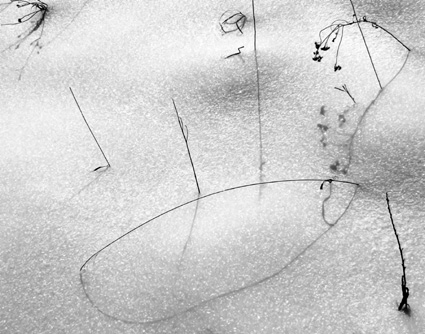by Chris Bolgiano
Tuesday, January 08, 2008
Licenced through the Blue Ridge Press free syndication service and posted here with the active cooperation of the tragically blogless author.
Our best friends Philly and Jake retired last year and built their dream house a short walk over the ridge from where my husband and I live amid a hundred acres of Appalachian Mountain forest. We all met in college and bonded on the first Earth Day. Since then, my husband and I have gone “Back to the Land,” homesteading in the lushest temperate woodlands in the world, while Philly and Jake worked their way across continents. For 35 years, we’ve looked forward to retiring together.
Now, their dream has become my nightmare. It began with their plans for a 4,000-square-foot house — twice the size considered comfortable for a family of four just a few decades ago. Suddenly I felt frightened for the state of the world, and saw the situation in double negatives: If my nature-loving friend Philly wouldn’t choose not to build a mansion, who would?
“It’s a personal decision, how much space you need,” Philly said, not in answer to my question, which I’ve never asked, but after I emailed her a link to a website that calculates the environmental footprint of such “personal” decisions. Every decision an American consumer makes is environmentally charged, because we use more of everything and pollute more than anyone else in the world. Philly knows this, and she knows that I know that she knows.
As Philly’s blueprints materialized, I recognized the green-eyed face of jealousy, namely my own, reflected in the wall-sized windows of her cathedral-ceilinged great room.
Philly’s house is much bigger and far more elegant than my rustic, passive-solar cabin — House Beautiful magazine versus Field and Stream. Trading jealousy for guilt, I joined Philly on shopping forays and shared her new-house happiness by buying toxic remodeling products likely made by exploited Chinese workers.
Meanwhile, Jake was directing bulldozers to open the view by pushing down two acres of big oaks and pines. No one limited the tread of tires, no one tagged any trees for protection, no one saved the mossy-carpeted forest topsoil for reuse.
In a footprint eight times larger than the standard quarter-acre suburban yard, nothing above microscopic level was left alive, and even the soil microbes must have been pretty hard pressed. Then dozens of dump trucks delivered soil mined elsewhere. Jake just bought a riding mower.
The real test of friendship came when I first walked down the southern slope of Jake’s new yard. Fallen trees sprawled across the property boundary and their wilting canopies sagged into our creek, where they would, in a sudden storm, divert the flow and erode the stream banks. I knew this to be a violation of a local erosion ordinance.
Talking to my husband later, tears sprang to my eyes. “If it was anybody else, we would turn them in just like we did those other two neighbors when they threatened the creeks.” One case involved a careless logger and the other a careless house-grader, and both times the creeks ran the color of bad coffee.
“Yes, that’s true,” my husband acknowledged. “But these are our best friends. We’re not going to… turn them in? His voice took a Valley Girl swing upward.
No. Ethical questions about who is responsible for protecting the environment faded in the harsh light of being a snitch. Who am I to criticize, anyway? We sent our share of sediment to the beleaguered Chesapeake Bay when we built our quarter-acre pond. Our ecological footprint here casts a shadow even at high noon on a clear day.
Scales of space and time determine what is sustainable. Extrapolated to each of the world’s six billion plus human beings, the scale of even my (minimally) more modest materialism would crash the earth’s ecosystems sooner rather than later, according to climatologists.
Well, I’m hoping for another twenty good years of living next door to Philly and Jake before the world collapses or I take the ultimate “Back to the Land” trip. Now that they’ve moved in, we get together regularly for dinner and a movie. We laugh at all the same jokes, just as we did in our youth. Our dear old friends have become poster people for the American environmental disconnect, but like siblings committed to family peace, we skirt the topics of our personal contributions to consumption, climate change, energy wars, and pollution.
For me, friendship trumps ideology. And if environmentalism is a religion — if the Creation is sacred — then I want to be a “hate the sin but love the sinner” kind of believer, not a “if thine eye offend thee pluck it out” kind. All I can do is ride herd on my own damage to the earth.











